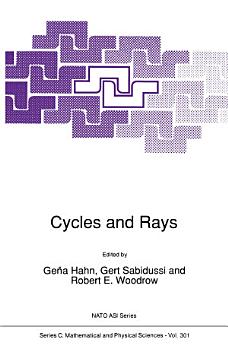Cycles and Rays
Gena Hahn · Gert Sabidussi · R.E. Woodrow
2012年12月 · Nato Science Series C 第 301 冊 · Springer Science & Business Media
電子書
276
頁
report評分和評論未經驗證 瞭解詳情
關於本電子書
What is the "archetypal" image that comes to mind when one thinks of an infinite graph? What with a finite graph - when it is thought of as opposed to an infinite one? What structural elements are typical for either - by their presence or absence - yet provide a common ground for both? In planning the workshop on "Cycles and Rays" it had been intended from the outset to bring infinite graphs to the fore as much as possible. There never had been a graph theoretical meeting in which infinite graphs were more than "also rans", let alone one in which they were a central theme. In part, this is a matter of fashion, inasmuch as they are perceived as not readily lending themselves to applications, in part it is a matter of psychology stemming from the insecurity that many graph theorists feel in the face of set theory - on which infinite graph theory relies to a considerable extent. The result is that by and large, infinite graph theorists know what is happening in finite graphs but not conversely. Lack of knowledge about infinite graph theory can also be found in authoritative l sources. For example, a recent edition (1987) of a major mathematical encyclopaedia proposes to ". . . restrict [itself] to finite graphs, since only they give a typical theory". If anything, the reverse is true, and needless to say, the graph theoretical world knows better. One may wonder, however, by how much.
為這本電子書評分
歡迎提供意見。
閱讀資訊
智慧型手機與平板電腦
筆記型電腦和電腦
你可以使用電腦的網路瀏覽器聆聽你在 Google Play 購買的有聲書。
電子書閱讀器與其他裝置
如要在 Kobo 電子閱讀器這類電子書裝置上閱覽書籍,必須將檔案下載並傳輸到該裝置上。請按照說明中心的詳細操作說明,將檔案傳輸到支援的電子閱讀器上。








